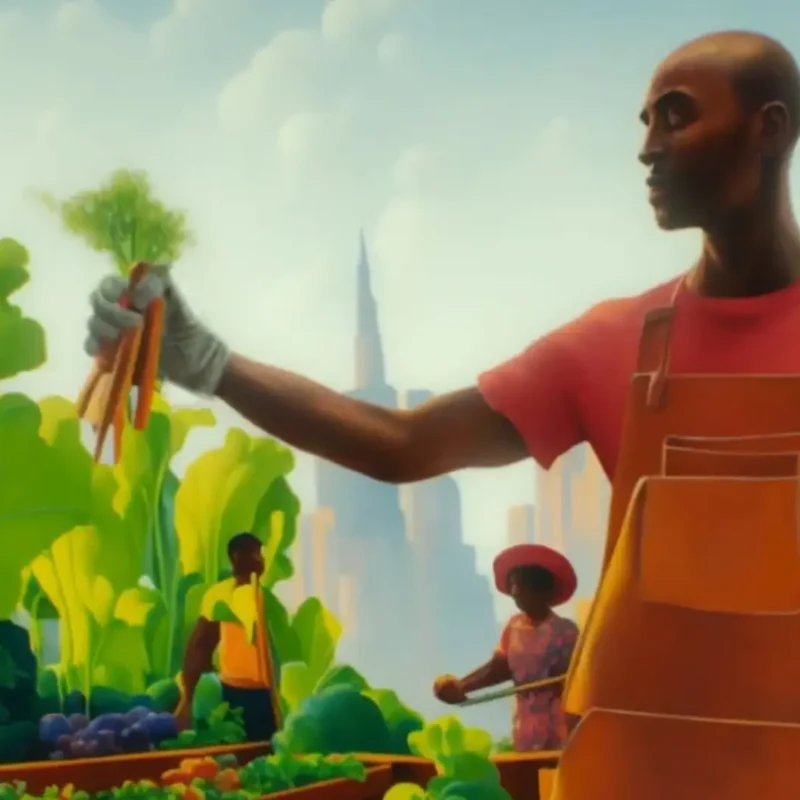How AI is reshaping creativity: Insights from art, tech and policy
AI is shaking things up in the creative world, and I get why a lot of artists feel anxious. Whenever new technology comes along — especially in industries like ours — it brings fear. Fear of losing control, fear of being replaced. That’s real. But there’s another side to this: AI can open doors we never thought possible.
In “Creativity in the Age of AI: Insights, Ethics & Opportunities,” a report I co-wrote with digital policy expert Natalia Domagala and technologist Angela Lungati — in collaboration with Mozilla and Skillshare — we explore both the anxieties and opportunities AI brings to creatives.
Together, we explore the future of creativity in this paper, touching on the ethical challenges and the immense possibilities AI brings.
Key points explored in the report:
- Ethical concerns about ownership: One of the biggest issues is ownership, as Natalia explores in our paper. AI pulls from massive datasets, often without the original creators’ consent. This raises serious concerns about transparency and who owns the work AI generates. Copyright laws weren’t built for this.
- Bias in AI: AI is only as good as the data it’s trained on. If AI is trained on biased data, it will reproduce those biases. It’s crucial to make sure AI tools are built with diverse datasets, and that the people designing them understand the importance of inclusivity.
- AI can lower barriers to creative innovation: The rise of generative AI tools like ChatGPT and OpenAI Sora is making high-level creative outputs accessible to non-experts. These tools can help level the playing field, allowing creatives to explore ideas and storytelling that wouldn’t have been possible before.
- A tool for cultural preservation: With “Protopica,” a short film I co-directed with Will Selviz, AI allowed us to blend Caribbean heritage and futurism, creating a new form of storytelling that wouldn’t have been achievable with traditional methods. This shows how AI can preserve culture while pushing creative boundaries.
- AI as a force for social change: Angela highlighted how AI-powered tools are supporting civic education and engagement in Kenya. For example, Corrupt Politicians GPT exposed corruption cases involving Kenyan politicians, while Finance Bill GPT simplified the complex provisions of a controversial finance bill. These tools have helped local communities understand the implications of proposed laws, contributing to nationwide protests and civic participation.
- AI amplifying, not replacing, human creativity: There’s a real fear among creatives that AI could replace their jobs, and that fear is legitimate. In a world driven by productivity, companies often cut human roles first. But AI shouldn’t be about replacing humans — it’s about amplifying what we can do. It should be used to empower, not replace, human creativity.
If you’re curious about how AI is changing the creative world — whether you’re excited or skeptical — this paper is for you. We explore the risks, the rewards and what AI means for the future of creativity. It’s the start of a crucial conversation about creativity and control, with insights from the worlds of art, technology and policy — offering a glimpse into how AI is reshaping the future.

Creativity in the Age of AI
Read the paperManuel Sainsily is a TEDx speaker and an XR and AI instructor at McGill University and UMass Boston. Born in Guadeloupe and a Canadian citizen based in Montreal, where he completed his Master of Science in computer sciences, he is a trilingual public speaker, designer, and educator with over 15 years of experience who champions the responsible use and understanding of artificial intelligence. From delivering a masterclass on AI ethics and speaking at worldwide tech, film, and gaming conferences to being celebrated by NVIDIA, Mozilla Rise25, and Skillshare, and producing art exhibitions with Meta, OpenAI, and VIFFest, Manuel amplifies the conversation around cultural preservation and emerging technologies such as spatial computing, AI, real-time 3D, haptics, and BCI through powerful keynotes and curated events.


